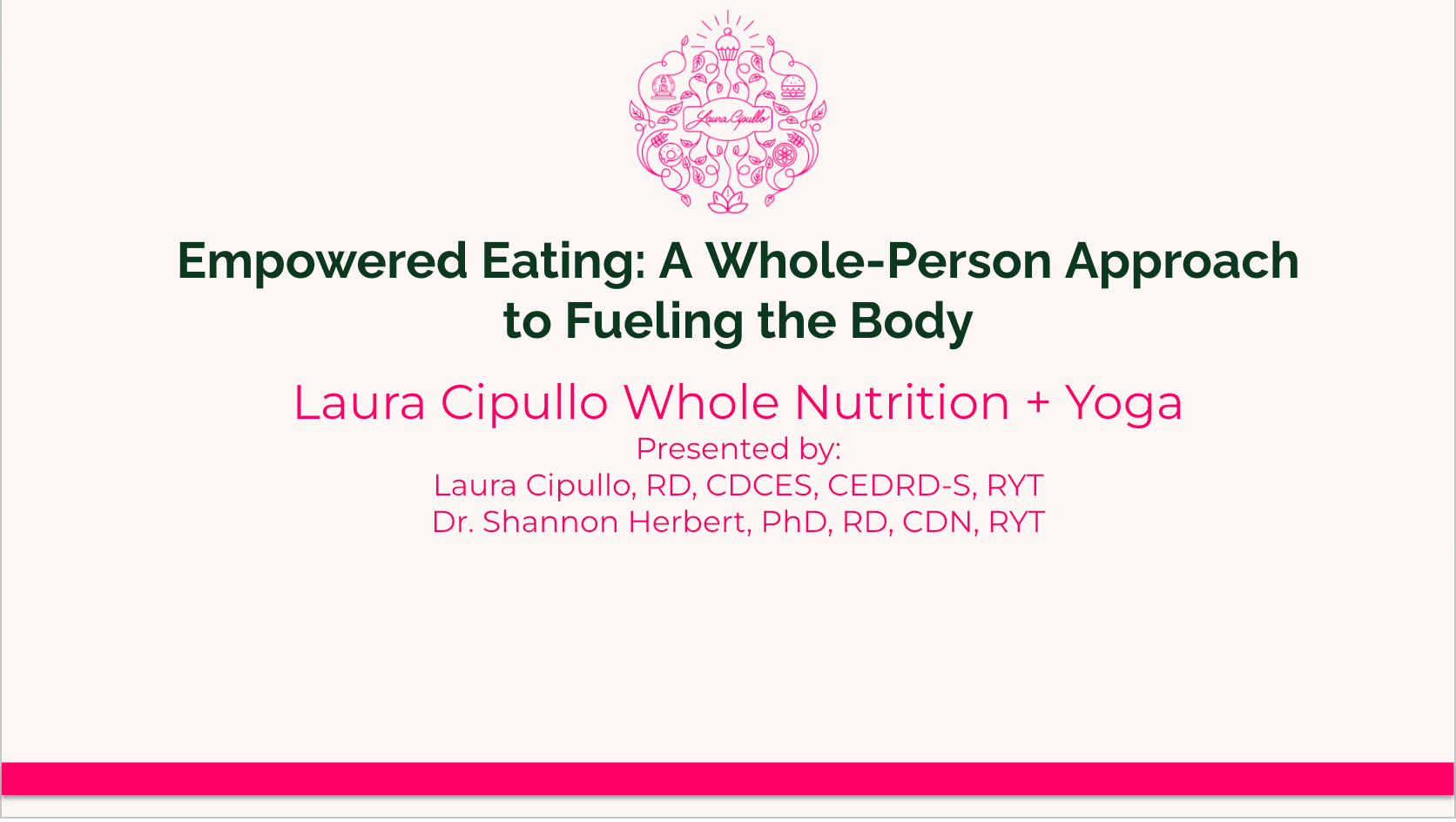Don’t want to be an “almond parent”? Here’s what to do.
By Laura Cipullo RD, CDCES, CEDRD-S and RYT
Nothing wrong with eating almonds, but so-called ‘almond’ parents are likely encouraging orthorexic eating (an obsession with proper, healthful eating) or anorexic behaviors (restrictive eating). Here’s how to tell if you’re an “Almond” parent and how to mindfully parent in a less toxic way.
Recognition:
- You only the shop the organic aisle
- Regardless of their age, you think your children should eat as little as you do
- Unlike the notorious Jimmy Kimmel segment “Tell Your Kids You Ate All Their Halloween Candy,” you’re the parent that actually throws all their candy away after they go to bed.
- You equate your child’s worth with their body size
- You equate your worth with your children’s body size
- You share your restrictive eating habits with your children
Instead…
Don’t:
- Don’t brand snacks as “treats”, identify the foods as sweet or savory snacks and offer them as a side with lunch or even afterschool.
- Don’t label snacks as healthy or unhealthy; instead act like a teacher or scientist and identify the sweet snack and or savory snack for what it actually provides. This means carbohydrates, proteins, fats, vitamins and minerals or perhaps just calories in the form of sugar.
- Don’t label fat as a bad word—it’s actually a critical component of a balanced diet.
- Don’t focus on the loss or gain of weight; instead focus on your child’s mood or behavior
Do:
- Keep your eating habits and your body concerns muted
- Role model eating all foods in moderation
- Teach your children how to eat kale AND cupcakes or get help with this.
- Provide a balanced meal that consists of carbs, protein and fat so your children are satiated physically and satisfied psychologically
Five Lunches to Put into Practice:
- Provide your child with lunches that teach moderation and allow for a discussion on how the foods provide nutrition. Consider these five options.
- Veggies with hummus and Doritos to accompany a turkey sandwich
- Veggies provide fiber and antioxidants
- Hummus provides monounsaturated fats
- Doritos add texture and energy; not organic; identify as chips not junk
- A turkey sandwich provides protein and carbs
- Apple and Cheese sticks to accompany a bagel with cream cheese
- Apples provide Vit C and fiber
- Cheese serves as the protein and provides calcium and Vit D
- Bagels are a great energy source of carbohydrates especially needed for growing kids
- Cream cheese serves as a fat to help fill you up
- Cookies & milk to accompany a chicken bean quesadilla
- Cookies provide carbs and fats (not an unhealthy treat)
- Milk provides calcium, Vit D and protein
- A chicken bean quesadilla equates to protein, fiber and even more calcium
- Note: it is helpful for kids to learn to eat lower fiber and less filling sides/snacks with a more satiating main.
- Cheese and dried fruit to accompany a thermos filled with whole wheat pesto pasta with chicken
- Cheese provides calcium and Vit D, protein and even fat
- Dried fruit is sweet and provides fiber and plant compounds to fight the flu
- Whole wheat pasta provides carbohydrates, and a serving of protein
- Pesto provides monounsaturated fats that help to increase HDL cholesterol
- Chicken provides more protein to aid in muscle repair and growth
- Olives, applesauce and crackers to accompany chicken fingers
- Olives are a finger food providing MUFA’s
- Applesauce can be used for dipping and is easy to digest; provides Vit C
- Baked chicken fingers provide about 28 grams protein to help fill you up and learn to eat all foods
- Veggies with hummus and Doritos to accompany a turkey sandwich
Teach your kids how to eat all foods in moderation ridding judgmental values. Serve meals and snacks that satisfy and satiate while providing balanced nutrition. In conclusion, Eat Kale and Cupcakes! Spread the message.







